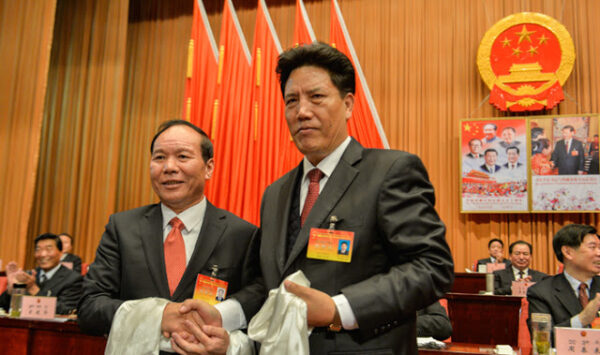- The provincial-level “Two Sessions” meetings of the Chinese government were held this week in the Tibetan capital of Lhasa. The focus of the meetings was religion and poverty alleviation and China’s struggle against the Dalai Lama and his “Dalai clique” of supporters.
- A former official in charge of Tibet issue in the United Front Work Department said the work in Tibet Autonomous Region (TAR) provided a good example for Xinjiang (known to Uyghurs as East Turkestan), where China has been accused of mass internment of Uyghurs.
- Just before the Two Sessions, China’s People’s Liberation Army (PLA) carried out a major military exercise in Tibet early in the new year, in a disproportionate show of force that deployed new weapons to test “combat capability” in Tibet.
Religion, poverty alleviation and the struggle against separatism are the main areas of focus of the ongoing “Two Sessions” meetings in Lhasa of the regional Political Consultative Conference (PCC) and the People’s Congress (PC), which began on Jan.6 and 7 respectively. Such meetings of the two bodies at the provincial level are held in the People’s Republic of China (PRC) annually before the national-level conference that takes place in Beijing in March.
Lobsang Gyaltsen, the chairman of the TAR People’s Congress spoke at a PCC session on religion on Jan. 6, asking participants to struggle against “separatist and destructive activities.” He further told them to expose and counter “the 14th Dalai and the Dalai Clique as being politically reactionary in nature, religiously misleading in nature, and methodologically deceptive in nature.”

The chairman of the TAR government, Che Dalha (Ch: Qi Zhala), is quoted by Chinese state media as saying in his report to the PC on Jan. 7: “Absolute poverty has been basically eradicated (in Tibet). We are poised to achieve the overall victory in the fight against poverty.”
At a session on Jan. 9, one judicial official stressed the need to base all work on “Xi Jinping “Thought on Socialism with Chinese Characteristics for a New Era”—the official doctrine of the ruling Chinese Communist Party (CCP), named after current Chinese Chairman Xi Jinping—including his important expositions on border management, stability, and political and legal work as the foundation for all work.
In its report on the meetings, state media outlet Global Times includes a quote from Zhu Weiqun, the former deputy head of the Central United Front Work Department—a major organ of the CCP—and one of the most virulent critics of the Dalai Lama. In the quote, Zhu says relevant authorities and religious institutions “have severely cracked down on the separatist force hidden in monasteries, and guided the patriotic and religious activities of Tibetan Buddhism for more than a decade, which have achieved good results.”
Global Times also paraphrases a Tibetan monk as telling the meetings that “monks should elaborate on the rules and doctrines of Tibetan Buddhism in line with the socialist society and social development.”
Tibet an example for Xinjiang
Global Times also links the Tibetan issue with that of Xinjiang (known to the Uyghurs as East Turkestan). It paraphrases Zhu as saying that “The success of religious work in Tibet has provided valuable experience for Xinjiang and other parts of the country.”
Chen Quanguo, the CCP secretary in Xinjiang who helped create the system of mass internment, formerly held the same job in Tibet.
Exercises by Tibet Military Command
Demonstrating China’s increasing militarization of the Tibetan Plateau, Chinese state television showed footage of the Chinese People’s Liberation Army’s (PLA’s) Tibet Military Command deploying helicopters, armored vehicles, heavy artillery and anti-aircraft missiles from the Tibetan capital of Lhasa to the border areas for “New Year exercises”.
The new weapons displayed, a tank and a howitzer (a type of cannon), were featured in the National Day military parade in Beijing on Oct. 1. According to state media outlet Global Times, “Both weapons feature powerful engines, enabling them to maneuver efficiently in Tibet’s terrains. […] Heavier hostile weapons cannot reach the oxygen-depleted border areas and if lighter they do not have enough firepower.”
The Global Times report says the weapons’ deployment in Tibet would “enhance PLA combat capability in plateau regions.”
Army leaders transferred
There was also a change in personnel in Tibet’s PLA reported this week by Chinese media network Caixin, with two key figures in military command transferred from the TAR: Gen. Xu Yong, commander of the Tibet Military Region, and Major Gen. Zhang Xiyuan, deputy political commissar of the Military Region.
No further information was available about the reasons for their transfers or their new locations.
The International Campaign for Tibet has monitored increasing cooperation between troops in Xinjiang and Tibet, who train together in high-altitude gyms, and hold joint military drills.